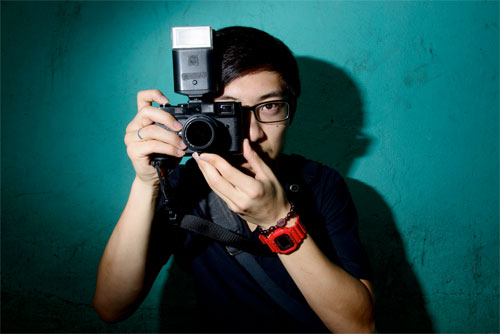Eric Kim is an international street photographer currently based in Los Angeles. Through his blog and workshops, he teaches others the beauty of street photography, how to find their own style and vision, as well as how to overcome their fear of shooting strangers.
In the past he has done collaborations with Leica, Magnum, as well as Invisible Photographer Asia. He is currently an instructor at UC Riverside Extension, teaching a university-level street photography course. Last year he was also one of the judges for the London Street Photography Festival.
He has exhibited his work at the Leica stores in Singapore, Seoul, and Melbourne. He has taught workshops in Beirut, Seoul, Tokyo, Amsterdam, Berlin, Hong Kong, San Francisco, Los Angeles, Chicago, Sydney, Melbourne, Zurich, London, Toronto, Mumbai, Singapore, Kuala Lumpur, and Kota Kinabalu.
Source: Expert Photography
Artist Statement
"My first interest in street photography happened by chance. I was standing at a bus stop and I saw a man with horn-shaped glasses reading a book. There was something so genuine and unique about the moment. My heart was palpitating and the second I brought my camera to my eye, he looked directly at me and I instinctively clicked. My heart froze, but I made my first street photograph, without even realizing it. Being interested in both street photography and the approach, I started to experiment shooting street photography using my background knowledge studying sociology at UCLA.
I started experimenting getting very close when shooting, and surprisingly never got punched in the face for taking photos (yet). Now through my blog and my workshops, I travel the world and teach others the beauty of street photography and how people can overcome their fear of shooting strangers. Teaching is my passion, and in the past I taught a photography class to under-privileged youth in Los Angeles, I taught a university-level online course at UC Riverside extension, and even a Sociology of Facebook and Online Social Networks while a student at UCLA.
I also love participating in collaborations as I am currently a contributor to the Leica blog, I was one of the judges for the London Street Photography Contest 2011, and have done two collaborations with Samsung (I starred in a Samsung Galaxy Note 2 commercial and a campaign for the Samsung NX 20 camera). I have also been interviewed by the BBC about the ethics of street photography. I have had some of my work exhibited in in Los Angeles and at the Leica stores in Singapore, Seoul, and Melbourne. I have also taught street photography workshops in Beirut, Seoul, Tokyo, Amsterdam, Berlin, Hong Kong, San Francisco, Los Angeles, Chicago, Sydney, Melbourne, Zurich, London, Toronto, Mumbai, Singapore, Kuala Lumpur, and Kota Kinabalu (and more to come). My motto is always to shoot with a smile, and from the heart."
